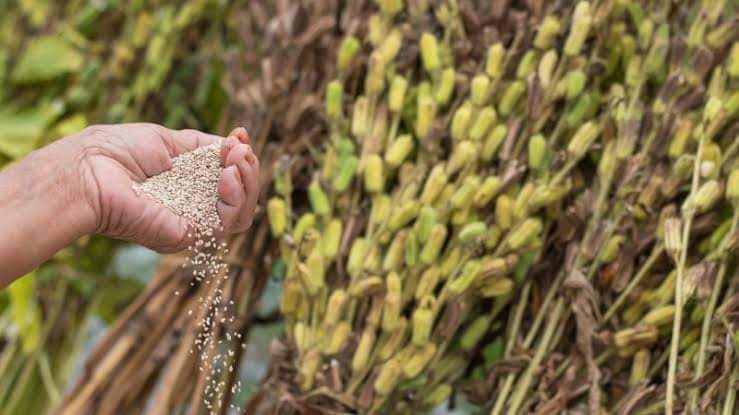Sesame Farming and Its Business Potential
Sesame Farming and Its Business Potential
Sesame (Sesamum indicum), commonly referred to as Ridi in Hausa, is one of the oldest oilseed crops in the world. It is widely grown for its seeds, which have a high oil content and are used for culinary, medicinal, and industrial purposes. Sesame farming has significant business potential due to its demand in both local and international markets.
Benefits of Sesame Farming
1. Economic Value:
Sesame is a high-value crop. Its seeds and oil fetch premium prices in global markets, making it a lucrative venture for farmers and traders.
2. Adaptability:
Sesame thrives in various climates but performs best in semi-arid regions with well-drained soils, making it ideal for farming in Arewa and other parts of Nigeria.
3. Nutritional Benefits:
Sesame seeds are rich in healthy fats, protein, calcium, iron, and antioxidants. They are used in making snacks, oils, and traditional foods.
4. Market Demand:
Sesame seeds are in high demand for exports, particularly in countries like China, Japan, and Turkey. They are used in the production of tahini, sesame oil, and bakery products.
Steps in Sesame Farming
1. Land Preparation:
Choose a well-drained, sandy-loam soil. Avoid waterlogged areas as sesame cannot tolerate excessive moisture.
Clear the land of weeds and debris. Plow and harrow to create a fine seedbed.
2. Seed Selection:
Use high-yield and disease-resistant varieties recommended for your region.
Treat the seeds with fungicides or insecticides to prevent diseases during germination.
3. Planting:
Plant sesame at the onset of the rainy season (for rain-fed farming) or ensure adequate irrigation for dry-season farming.
Seeds should be sown at a depth of 2-3 cm, with a spacing of 30-45 cm between rows and 10-15 cm between plants.
4. Weeding and Fertilization:
Keep the farm weed-free during the first six weeks to avoid competition for nutrients.
Apply organic manure or NPK fertilizers as recommended by agricultural experts.
5. Pest and Disease Management:
Common pests include aphids and caterpillars. Diseases like bacterial blight and leaf spot can also occur.
Use organic or chemical pesticides and ensure crop rotation to reduce pest and disease outbreaks.
6. Harvesting:
Sesame is ready for harvest 90-120 days after planting when the leaves turn yellow, and the pods begin to dry.
Harvest manually or mechanically, but handle with care to avoid seed loss.
—
Post-Harvest Handling
Drying: Properly dry the seeds to reduce moisture content, preventing spoilage.
Cleaning: Remove impurities such as stones and plant debris.
Storage: Store sesame in clean, dry sacks or silos to maintain quality.
Processing: Consider processing sesame into oil or tahini for added value.
Business Opportunities in Sesame Farming
1. Farming:
Farmers can earn substantial profits by cultivating sesame due to its relatively low production cost and high market value.
2. Processing:
Setting up a sesame oil mill or tahini production unit can significantly increase profit margins.
3. Exportation:
Nigeria is one of the largest producers of sesame seeds globally. Exporting to high-demand countries ensures consistent revenue.
4. Value Addition:
Entrepreneurs can invest in sesame-based products such as snacks, oils, and health supplements.
5. Agro-Consultancy:
With proper expertise, you can train and guide other farmers on best practices in sesame cultivation.
Challenges in Sesame Farming
1. Climatic Risks:
Sesame is sensitive to heavy rains and drought, which can affect yield.
2. Pest and Diseases:
Poor management practices can lead to significant losses.
3. Lack of Awareness:
Many farmers lack knowledge of modern farming techniques, which limits productivity.
4. Market Fluctuations:
Prices can vary due to global demand and supply dynamics.
Sesame farming is a promising agribusiness, particularly in regions like Arewa where it thrives naturally. With proper planning, adherence to best agricultural practices, and leveraging market opportunities, sesame farming can serve as a reliable source of income and contribute to the economic growth of farming communities. Entrepreneurs, investors, and farmers should consider this crop as a key driver for wealth creation.




